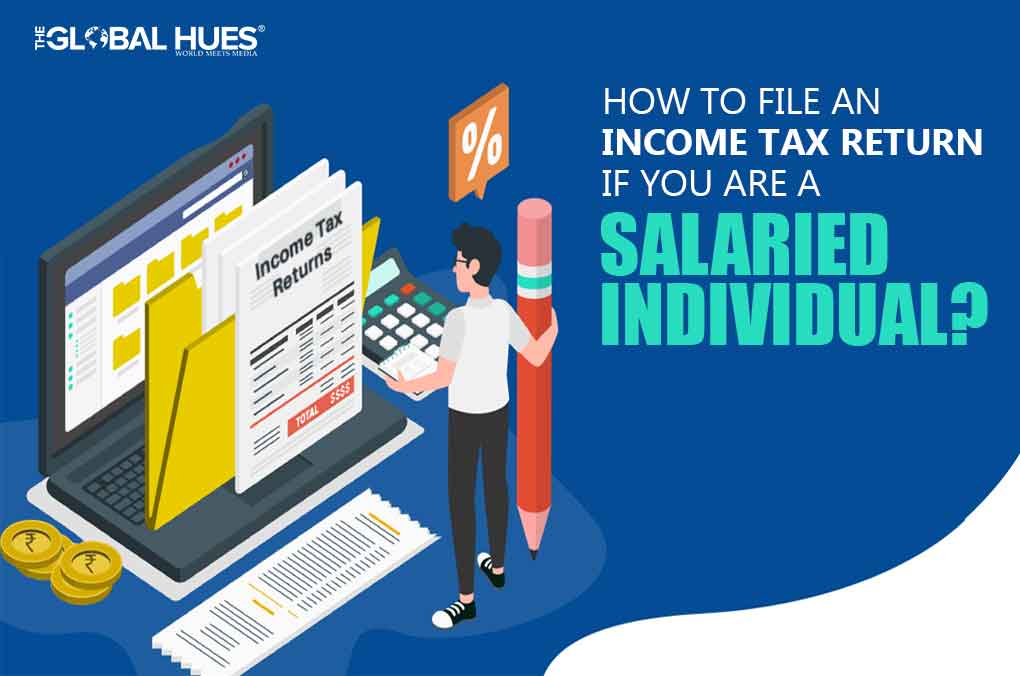The Income Tax Act of 1961 mandates Indian taxpayers to pay Income Tax Returns on a timely basis. Filing an ITR is considered the moral and social responsibility of every responsible citizen of India.
Filing an ITR holds pivotal importance for every salaried individual as the tax returns act as proof of income, which helps in getting access to various financial products like loans. Moreover, a salaried person should file an ITR to avail other benefits like claiming tax refunds, quick visa processing, adjustment of capital gains or losses etc.
Let’s first take a look at income tax slab rates for Financial Year 2022-23 for Salaried employees:
INCOME TAX SLAB AND RATES FOR AY 2023-24
| Income Tax Slab | Income Tax Rate |
| Up to ₹ 2,50,000 | Nil |
| ₹ 2,50,001 – ₹ 5,00,000 | 5% above ₹ 2,50,000 |
| ₹ 5,00,001 – ₹ 7,50,000 | ₹ 12,500 + 10% above ₹ 5,00,000 |
| ₹ 7,50,001 – ₹ 10,00,000 | ₹ 37,500 + 15% above ₹ 7,50,000 |
| ₹ 10,00,001 – ₹ 12,50,000 | ₹ 75,000 + 20% above ₹ 10,00,000 |
| ₹ 12,50,001 – ₹ 15,00,000 | ₹ 1,25,000 + 25% above ₹ 12,50,000 |
| Above ₹ 15,00,000 | ₹ 1,87,500 + 30% above ₹ 15,00,000 |
There are some key documents that you need to be equipped with to file your correct income tax return. Some important ones are salary slips, form 10E, Form 16 from the employer, Foreign slips and other important documents.
Read: Documents required to file an ITR for salaried employees
ITR APPLICABLE FOR SALARIED INDIVIDUALS
-
ITR-1 (SAHAJ)
Employees with a total income of up to Rs. 50 lakhs should file ITR-1. The total income includes earnings under the ‘Income from other sources’ alongside salaries. However, you should not have more than one house property if you are filing ITR-1. The income from agriculture should not exceed Rs. 5,000.
-
ITR-2
If your total income exceeds Rs. 50 lakhs and possess more than one house property, you can file ITR-2. You can file returns with this ITR if you generate income from capital gains and/or other sources, but not from profits from any business.
-
ITR-3
If you receive income from salary, business, house property (one or multiple), capital gains, and other sources, you can file ITR-3.
HOW TO FILE AN ITR ONLINE FOR SALARIED EMPLOYEES?
Step 1: Open the e–filing portal of the Income Tax Department
Step 2: Log in to the portal by submitting your User ID, Password, and Captcha code. If you haven’t registered, sign up using your PAN Number, which will then serve as the User ID.
Step 3: Under the e-file section, click on ‘Income Tax Return’ and select the assessment year. Select the appropriate ITR and download it.
Step 4: If you aren’t filing a revised return, select the filing type as ‘Original’.
Step 5: Choose the submission mode ‘Prepare & Submit Online’ and click on ‘Continue’.
Step 6: Fill in the form with the requisite information. Thereafter, add details of tax payments. Click on the ‘Save Draft’ option to avoid losing data and proceed forward.
Step 7: After computing the payable tax, enter challan details (skip the step if no tax liabilities are there).
Step 8: Confirm the details and select ‘Submit’.
You will receive a message on the screen ensuring the successful filing of the ITR. An acknowledgement form called ITR-V is then generated.
SHOULD A SALARIED EMPLOYEE FILE AN ITR?
For any individual who earns taxable income that is above the exemption limit, it is mandatory to file the ITR. Non-filing of ITR leads to imprisonment.
Read the consequences of not filing an ITR here: What happens if you don’t file an Income Tax Return?
TAX EXEMPTIONS FOR SALARIED EMPLOYEES?
Salaried employees can avail tax exemptions under Section 80C, 80CCC, 80CCD (1), 80D, 80E, 80G, and 80TTA.
Section 80C, 80CCC, 80CCD (1)
Section 80C is most commonly used for saving income tax. An individual can claim deductions up to Rs. 1.5 lakh for tax deduction for who invests or spends on stipulated tax-saving avenues. Some investments that are eligible for an exemption under Section 80C, 80CCC, 80CCD (1) up to a maximum of Rs. 1.5 lakh are-
- Life insurance premium
- Equity Linked Savings Scheme (ELSS)
- Fixed Deposit (Tax Savings)
- Employee Provident Fund (EPF)
- Annuity/ Pension Schemes
- Tuition fees for children
- Principal payment on home loans
- Sukanya Samriddhi Account
- NSC (National Saving Certificate)
- Post office time deposits
- Contribution to PPF Account
- National Pension Scheme
Section 80D
Section 80D is a deduction that an individual claims on medical expenses. One can save tax on medical insurance premiums paid for the health of self, dependent parents, and family.
The limit for Section 80D deductions is-
- Rs. 25,000 for premiums paid for self/family members.
- Rs. 50,000 for premiums paid for senior citizen parents.
- Health checkups to the extent of Rs. 5,000 is covered additionally within the overall limit.
- Deduction up to Rs. 50,000 with respect to medical expenditure incurred by the senior citizen (60 years or above) or towards senior citizen parents (provided, not covered under mediclaim policy).
Section 80E
This section includes a deduction of interest paid on loans taken for pursuing higher education from taxable income. To elaborate, an education loan taken on behalf of children, spouse, or student for whom the taxpayer is the legal guardian is applicable for deduction under this section.
Section 80G
One can claim contributions made to charitable organizations, and relief funds as a deduction under Section 80G of the IT Act. However, it does not include all donations. Only donations made to prescribed funds qualify as a deduction.
-
Section 80TTA
This section offers a deduction of up to Rs. 10,000 on income earned from savings account interest. If the income from bank interest is less than Rs. 10,000, the whole amount is allowed as a deduction but if the amount exceeds, the amount after that would be taxable.




